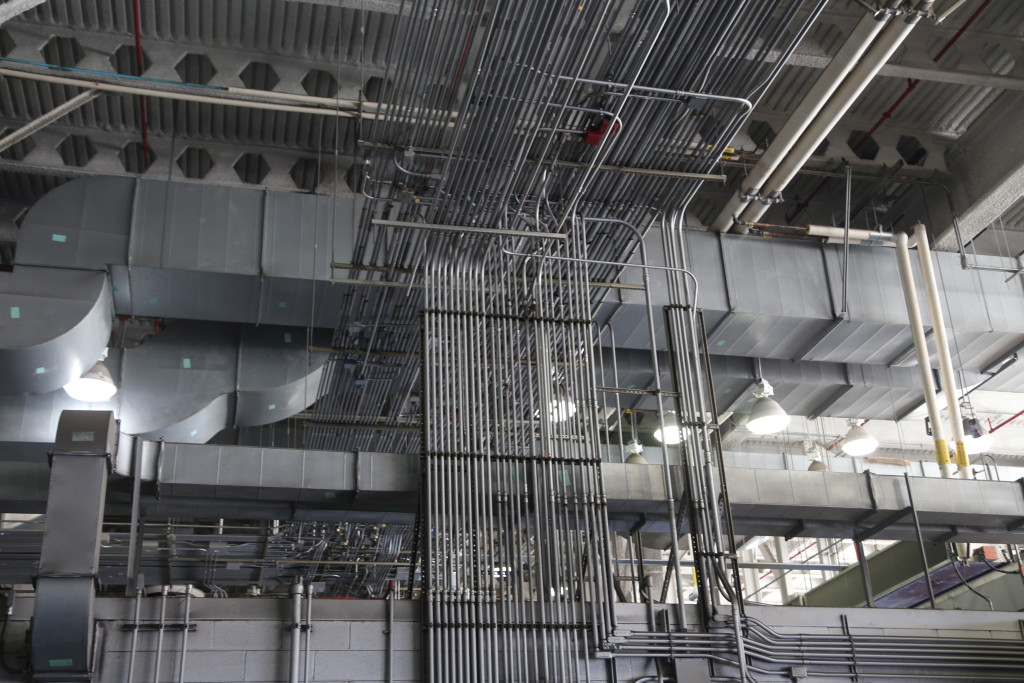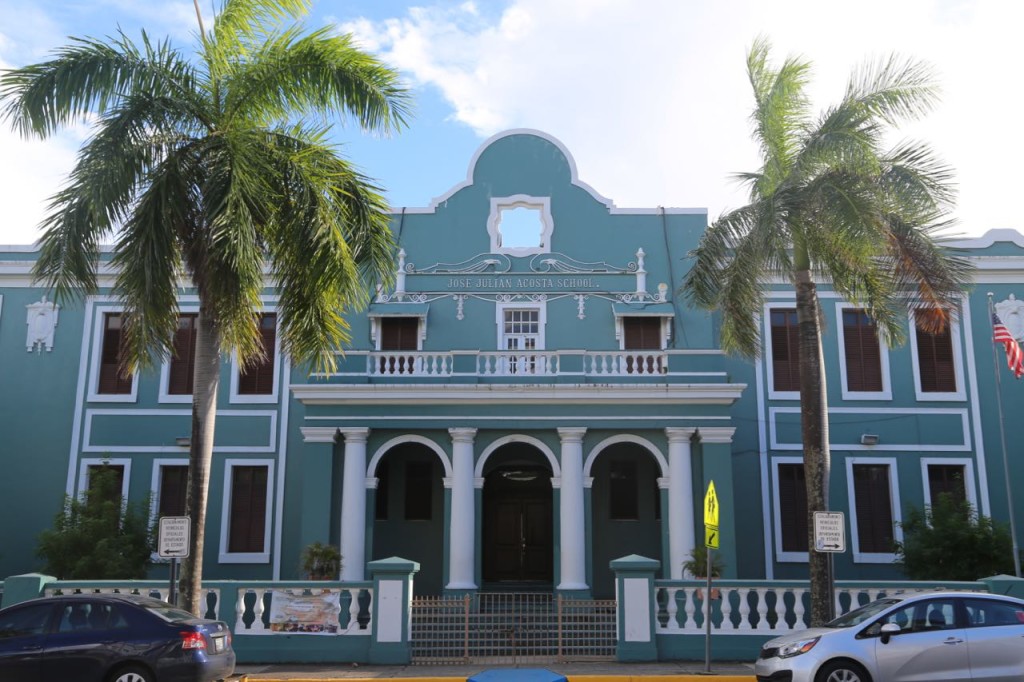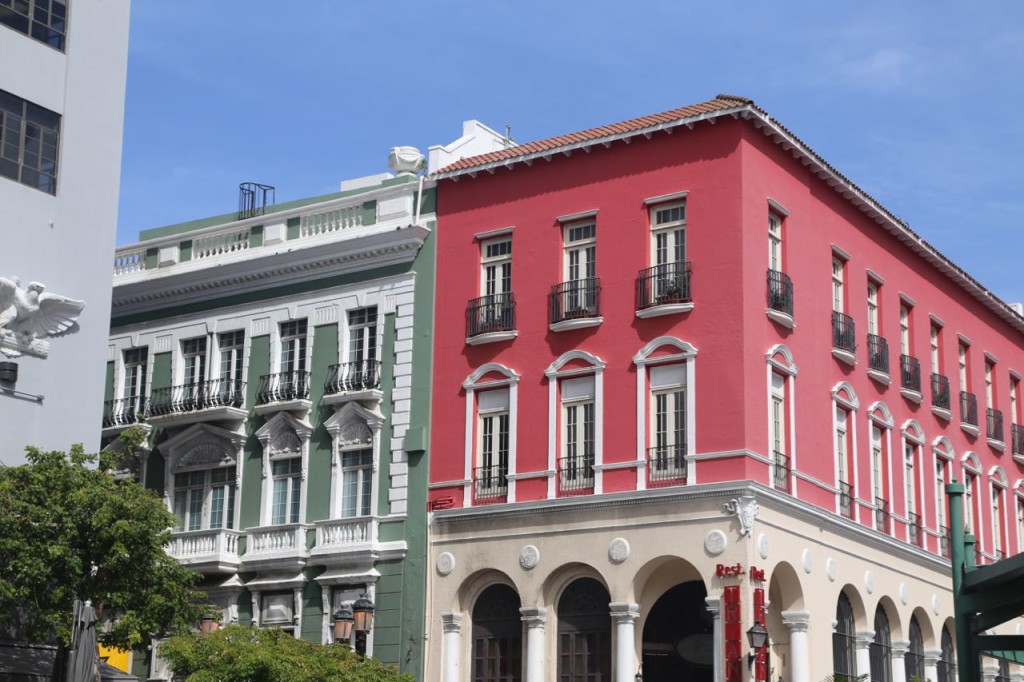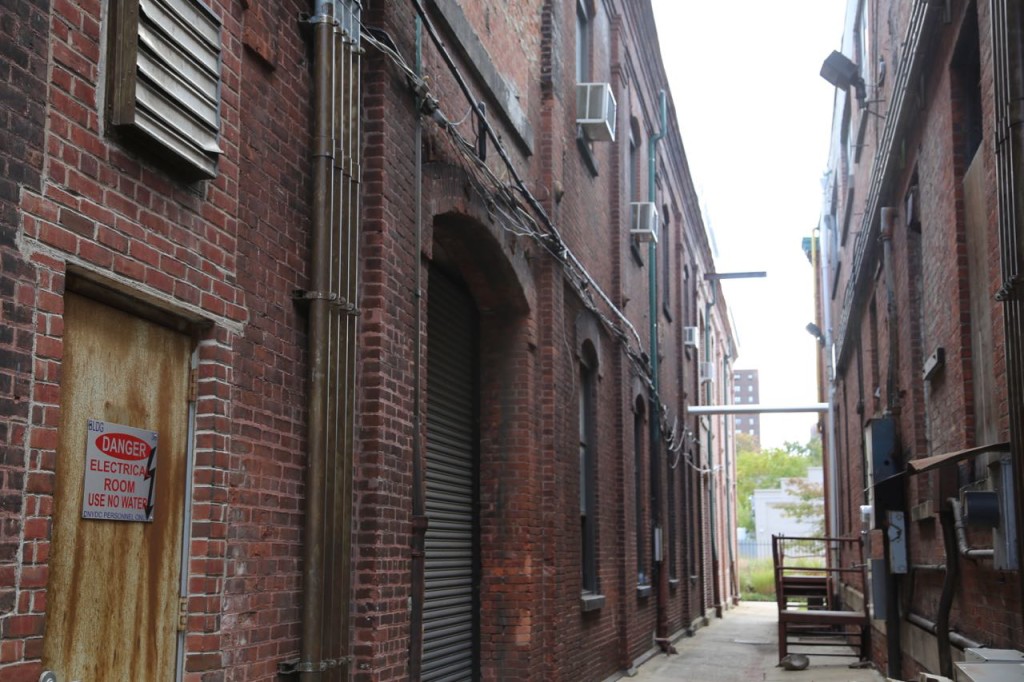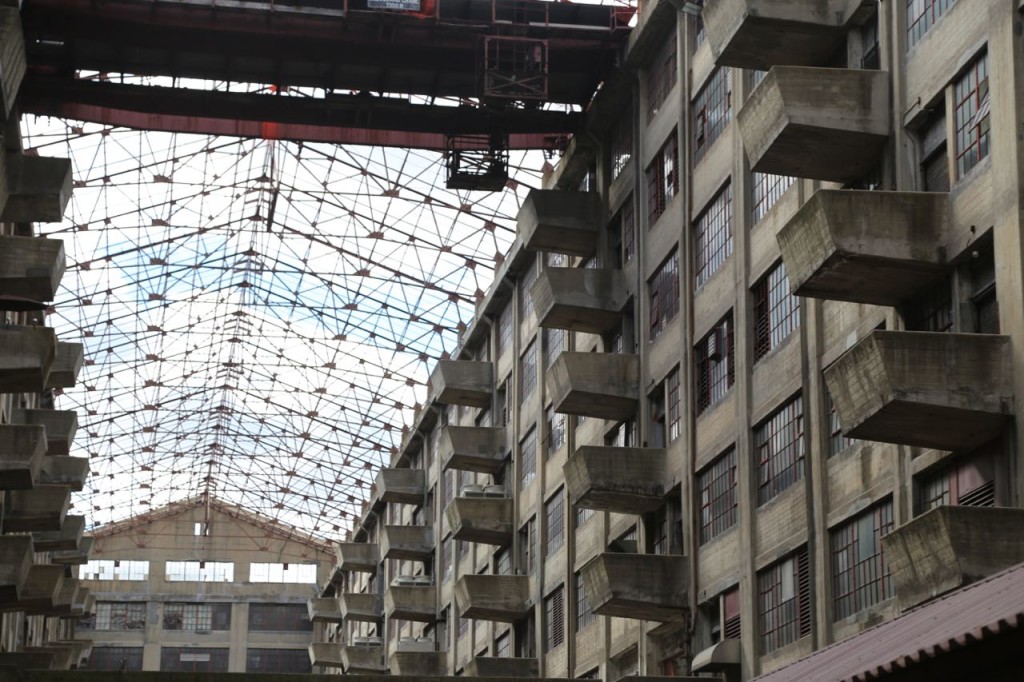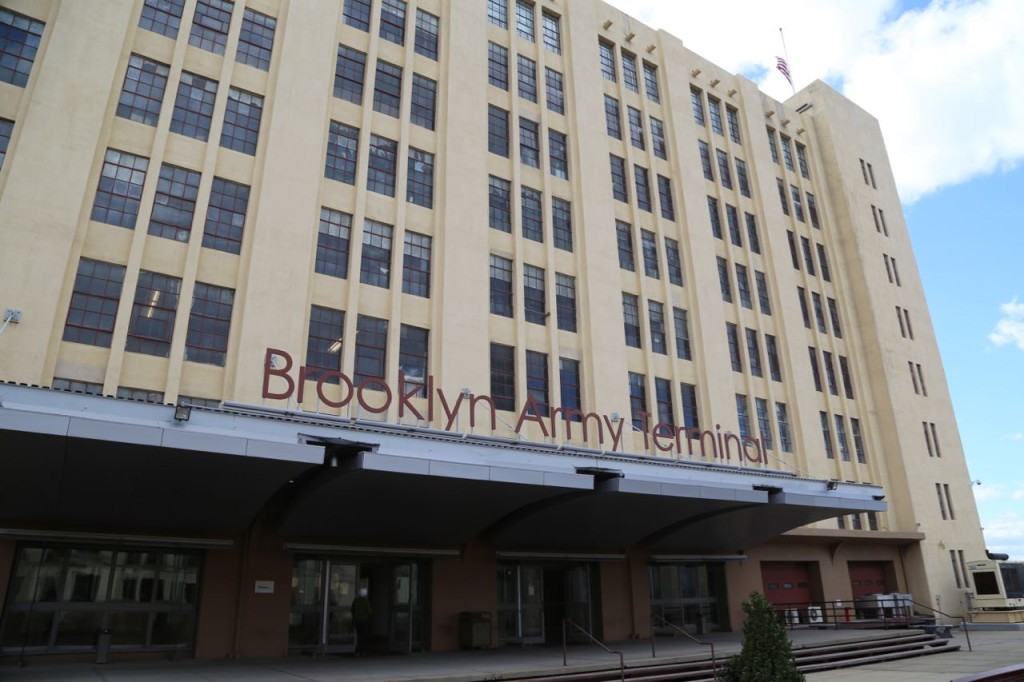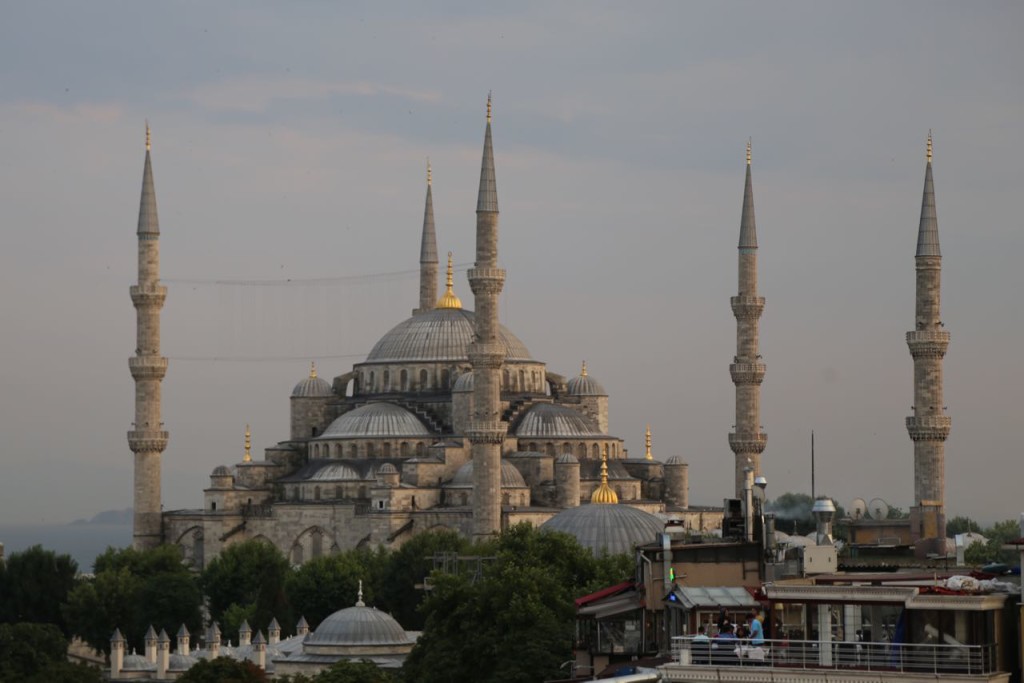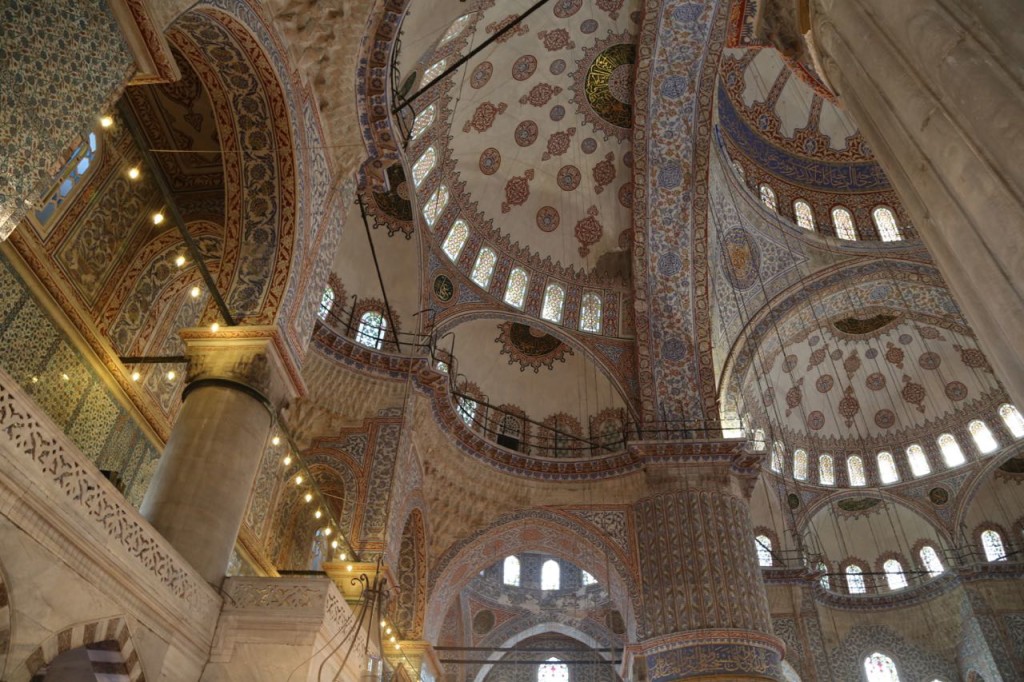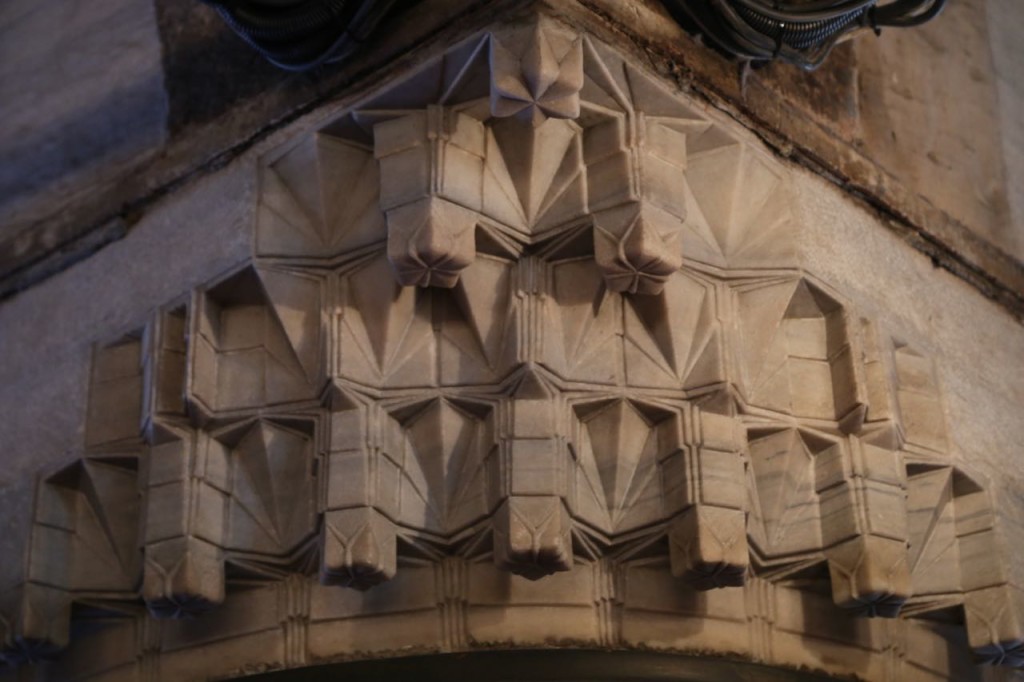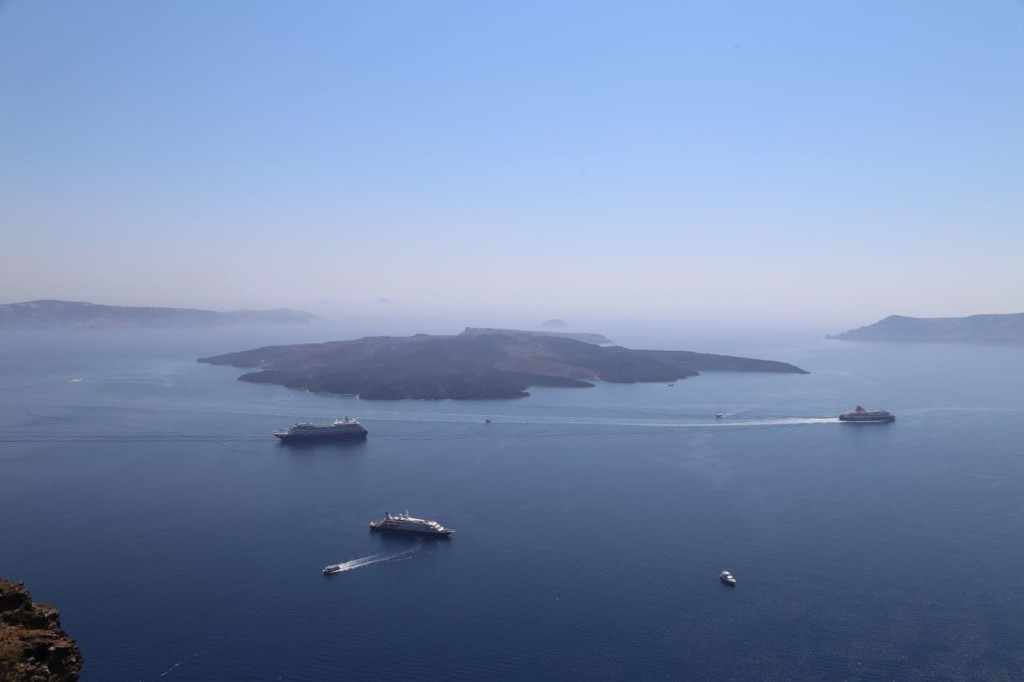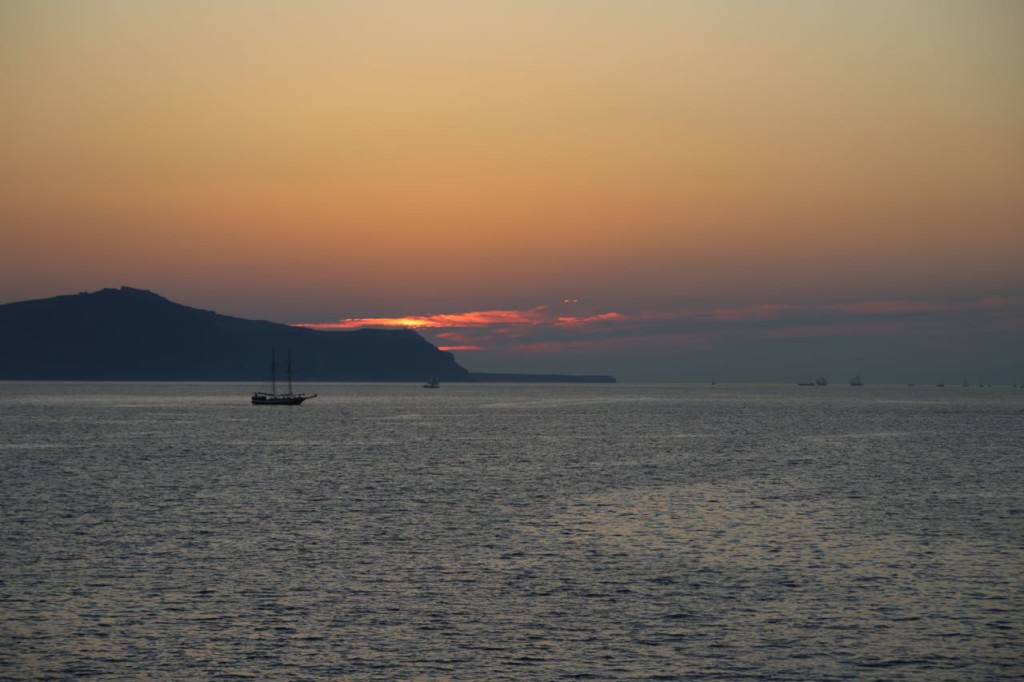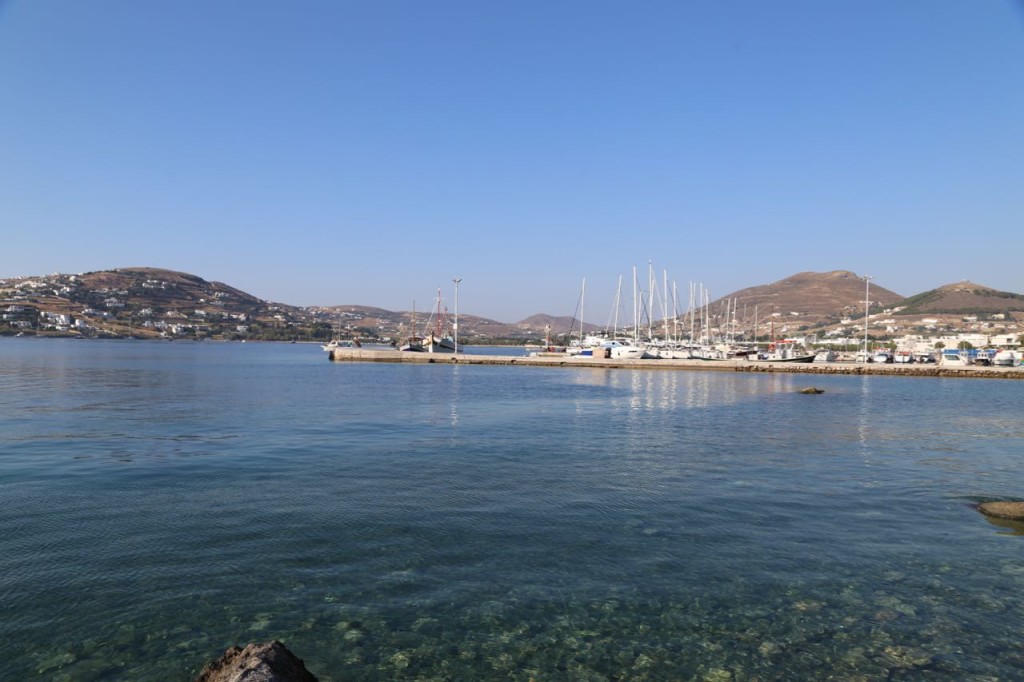Dupont Underground is an abandoned trolley station underneath Dupont Circle that recently had a design competition to reuse a whole lot of plastic balls from National Building Museum’s The Beach. The winning entry was Raise/Raze, which formed the balls into 3 x 3 cubes that were used to build columns and walls in a portion of Dupont Underground. The structures built by the balls were rather interesting, especially when considering they were built with spheres. I also rather liked the way the cube blocks mimicked the tiles on the outer wall of the underground. 













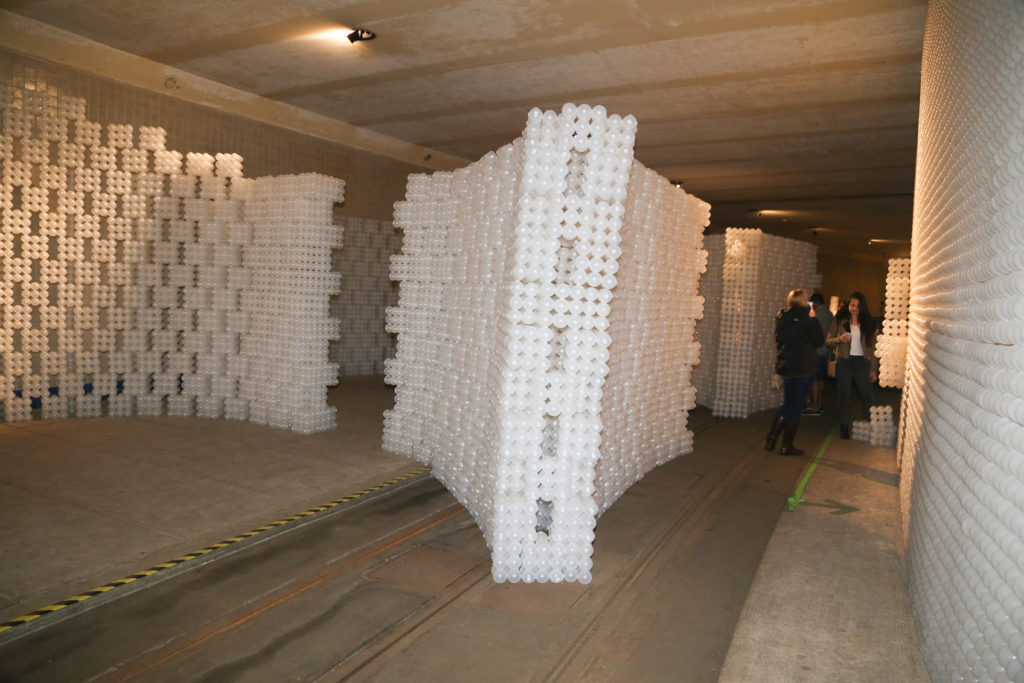

Tag Archives: architecture
Grand Avenue Bus Depot
I toured the New York MTA’s Grand Avenue Bus Depot with the New York Transit Museum. The depot is relatively new, which is evident when you are inside. I don’t know much about bus depot design, but I was astounded by the amount of ventilation in the building. Considering the number of vehicles going and in and out every day, the ventilation is needed, but still I was surprised by the amount of it. The bus depot occupies the first level of this huge building, and the second level holds the Central Maintenance facility. They are considered to be different facilities. The bus depot is, well, a depot, or parking area for when the buses are not in use. The depot also where regular maintenance is performed and everyday activities like fueling, money removal, and washing.
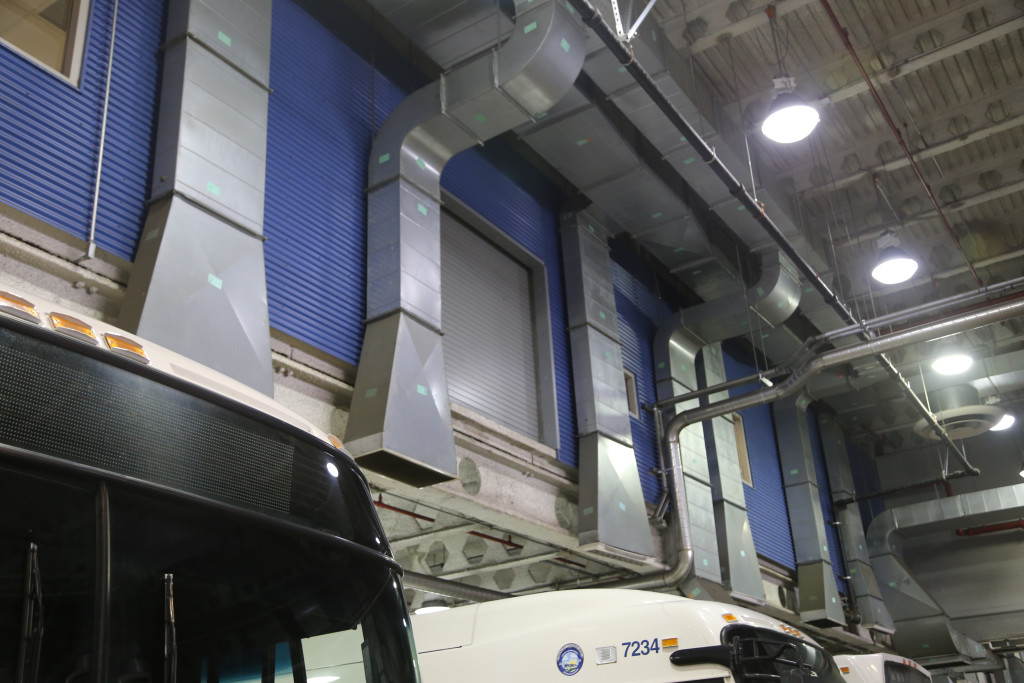
I asked the facility manager what this garage style door was for. He looked at it and me and said he had never been asked that and wasn’t actually sure. Leave it to me to be able to stump people.
Confession: Other people in the group asked the depot manager to please let us go through bus wash, so he granted their wishes, and we all boarded a bus and went through a wash.
The ceilings and walls were almost completely filled with ventilation ducts, pipes, and conduits.
One of my favorite parts of the tour was learning that they vacuum money out of the fare box. MTA buses only accept coin and not bills. They hook up a hose to outlet at the bottom of the fare box, and the money is vacuumed out to secure boxes where it falls into bags or some other movable containers. The staff of the facility never touches the money. Then the money is removed from the boxes on a regular basis by armed staff. I think it is because I have a B.S. in chemical engineering that I found this so fascinating. We learned about pipes and other conduits and pump design for fluids. Coins are obviously not fluids. I am intrigued by the design that would be needed by items that are going to bounce around and not flow the way a fluid does. Also the pressure needed to pull coins out must be interesting.
Viejo San Juan’s Colorful Buildings
I love buildings that are painted bright colors. They grab you and make you look at them. They look fun, festive, and alive. The Caribbean is famous for its colorful buildings, and Viejo San Juan has its share. Here are a few of the colorful buildings I saw in Viejo San Juan that I really liked.
Viejo San Juan
It wasn’t until I walked around Viejo (Old) San Juan, especially the perimeter of it, that I realized how it really is a walled city. El Morro guards the entrance to the bay, but the fortifications encircles the entirety of the old city. One of the few ways, and the historic way, from the sea level to the city is through La Puerta de San Juan. Walking through the La Puerta, you realize the fortification is serious fortification, as La Puerta is almost a tunnel in terms of the distance you must walk to go from the sea side to the city side. The fortification is truly impressive with the wall thickness and garitas and small openings for guards to stand ready. One modern day bonus of the fortification is that it must help protect Viejo San Juan from any hurricane storm surge. There is a promenade that follows the wall from its beginning on the bay side and ends on the ocean side of El Morro. It gives spectacular views of the fort and the water as well.
Brooklyn Navy Yard
As part of Open House New York, I got to wander around the Brooklyn Navy Yard. The old navy shipyard is being redeveloped for commercial use. There are several dry docks, and one dry dock is still operational. There is also many green features includes renewable power. However, the site is quite simply a really cool place to photograph.
Brooklyn Army Terminal
As part of Open House New York, I toured the Brooklyn Army Terminal. It was built at the end of World War I and was a huge military base that was used to transfer people and materials from land to sea. It was built in an entirely utilitarian design and in the incredibly short time of 17 months. However, its utilitarian design is what I find incredibly interesting. Building B has this huge atrium with two sets of railroad tracks. Trains would travel directly into the building where material would be off and on loaded from various levels. There are several bridges connecting several buildings so that material could be moved between buildings on vehicles without interfering with the train traffic below. The atrium is dramatic, and I love that the concrete pour lines are visible.
Turkey: Hagia Sofia of Istanbul
Hagia Sofia is an amazing piece of architecture and art. It was a church that became a mosque that became a museum. The interior is covered with beautiful stone panels, carved stone, mosaics, and painted plaster. Much of the mosaics were covered with plaster and then painted centuries ago, but the revealed mosaics are intricate and beautiful. The painted plaster is quite beautiful also. The stone panels demonstrate the beauty of natural stone. Besides the actual decorative interior, the actual architectural form of the building with all its domes and arches is gorgeous and also amazing from an engineering standpoint. Considering the age of the building and the number of earthquakes the area has suffered, it is amazing that the building is still standing. Some earthquake damage can be seen such as a leaning column in a photograph below.
Turkey: Blue Mosque of Istanbul
While in Istanbul, our tour group visited the famous Blue Mosque. It is gorgeous. The exterior is beautiful, but the interior is even more beautiful. The interior is arches upon arches upon domes. Most of the interior is covered with gorgeous mainly blue and white tile, which gives the mosque it’s name.
Greece: Santorini
Today we visited Santorini. We came in at sunrise and left after sunset. It is not often I get both sunrise and sunset photos in a single day, but Santorini was worth it. Santorini is a photographer’s dream place. The island group of Santorini is a collapsed caldera. The main towns on the island of Santorini, Fira and Oia, are set on the ridge of the caldera. So, it’s a rather dramatic setting. The architecture is the classic Cycladic, but not all the buildings are white stucco. Some are different colors, and of course there are many churches with the beautiful, simple blue dome. If you can find the good vantage points, which is not always a simple endeavor, then you can get some amazing photographs. Finding the good vantage points involves going down many different tiny sidewalks that twist and curve and at times look like they lead no where.
Greece: Paros
This afternoon was spent in Paros. I really liked Paros. It is small, not too touristy, pretty, and friendly. The Church of Ekatontapiliani was a highlight of our walking tour. It was a wonderful church to photograph with its beautiful stonework.








